- 翰林提供学术活动、国际课程、科研项目一站式留学背景提升服务!
- 400 888 0080
IB DP Maths: AA SL复习笔记5.5.1 Modelling with Differentiation
Modelling with Differentiation
What can be modelled with differentiation?
- Recall that differentiation is about the rate of change of a function and provides a way of finding minimum and maximum values of a function
- Anything that involves maximising or minimising a quantity can be modelled using differentiation; for example
- minimising the cost of raw materials in manufacturing a product
- the maximum height a football could reach when kicked
- These are called optimisation problems
What modelling assumptions are used in optimisation problems?
- The quantity being optimised needs to be dependent on a single variable
- If other variables are initially involved, constraints or assumptions about them will need to be made; for example
- minimising the cost of the main raw material – timber in manufacturing furniture say
- the cost of screws, glue, varnish, etc can be fixed or considered negligible
- If other variables are initially involved, constraints or assumptions about them will need to be made; for example
- Other modelling assumptions may have to be made too; for example
- ignoring air resistance and wind when modelling the path of a kicked football
How do I solve optimisation problems?
- In optimisation problems, letters other than x, y and f are often used including capital letters
- V is often used for volume, S for surface area
- r for radius if a circle, cylinder or sphere is involved
- Derivatives can still be found but be clear about which letter is representing the independent (x) variable and which letter is representing the dependent (y) variable
- A GDC may always use x and y but ensure you use the correct letters throughout your working and final answer
- Problems often start by linking two connected quantities together – for example volume and surface area
- Where more than one variable is involved, constraints will be given such that the quantity of interest can be rewritten in terms of one variable
- Once the quantity of interest is written as a function of a single variable, differentiation can be used to maximise or minimise the quantity as required
STEP 1
Rewrite the quantity to be optimised as a single variable, using any constraints given in the question
STEP 2
Differentiate and solve the derivative equal to zero to find the “x"-coordinate(s) of any stationary points
STEP 3
If there is more than one stationary point, or the requirement to justify the nature of the stationary point, differentiate again
STEP 4
Use the second derivative to determine the nature of each stationary point and select the maximum or minimum point as necessary
STEP 5
Interpret the answer in the context of the question
Exam Tip
- The first part of rewriting a quantity as a single variable is often a “show that” question – this means you may still be able to access later parts of the question even if you can’t do this bit
- Even when an algebraic solution is required you can still use your GDC to check answers and help you get an idea of what you are aiming for
Worked Example
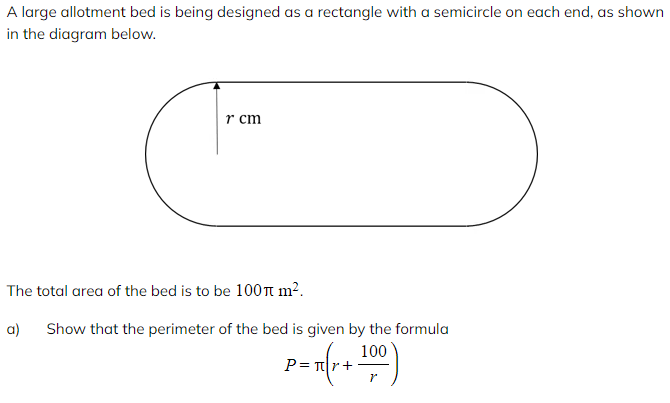
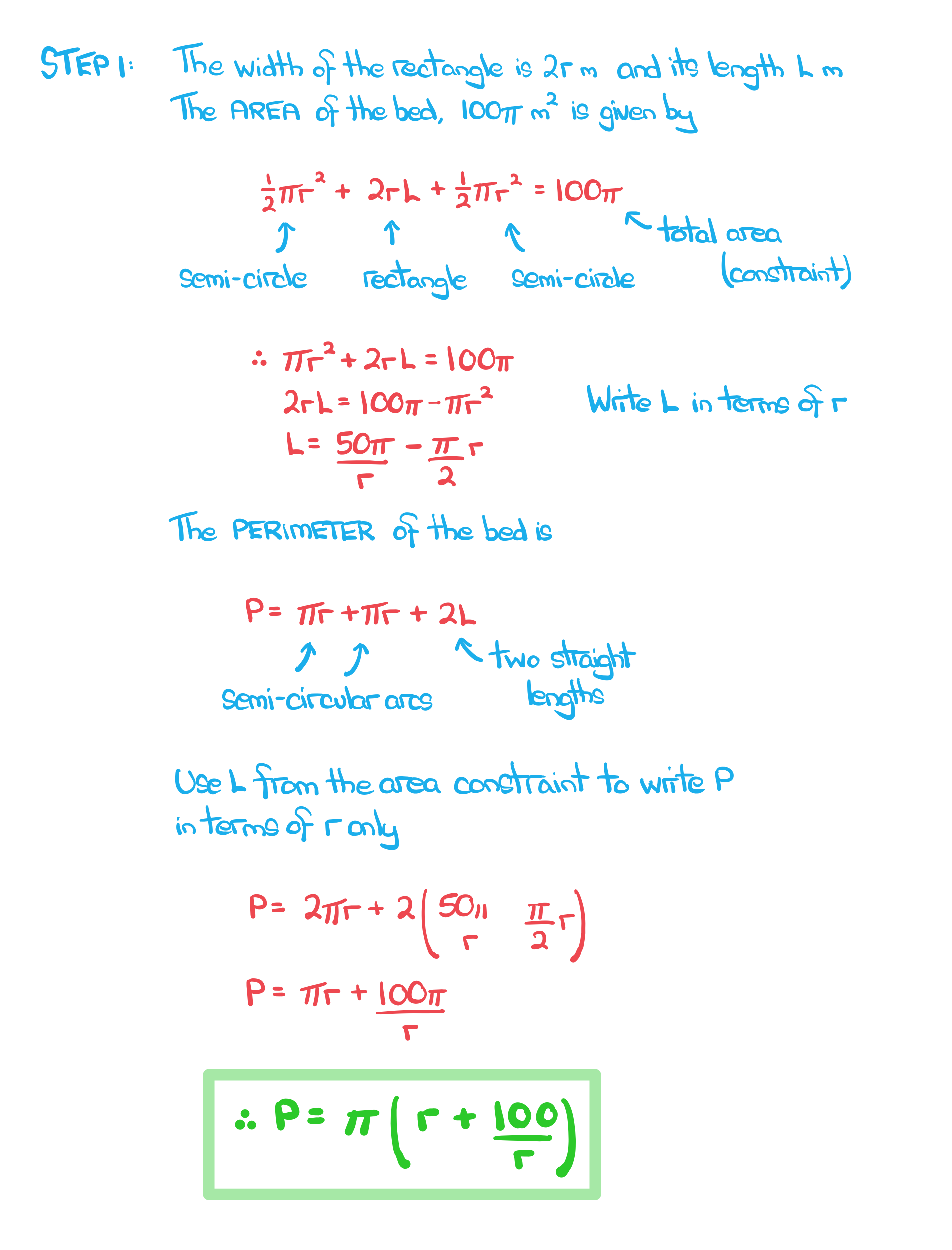

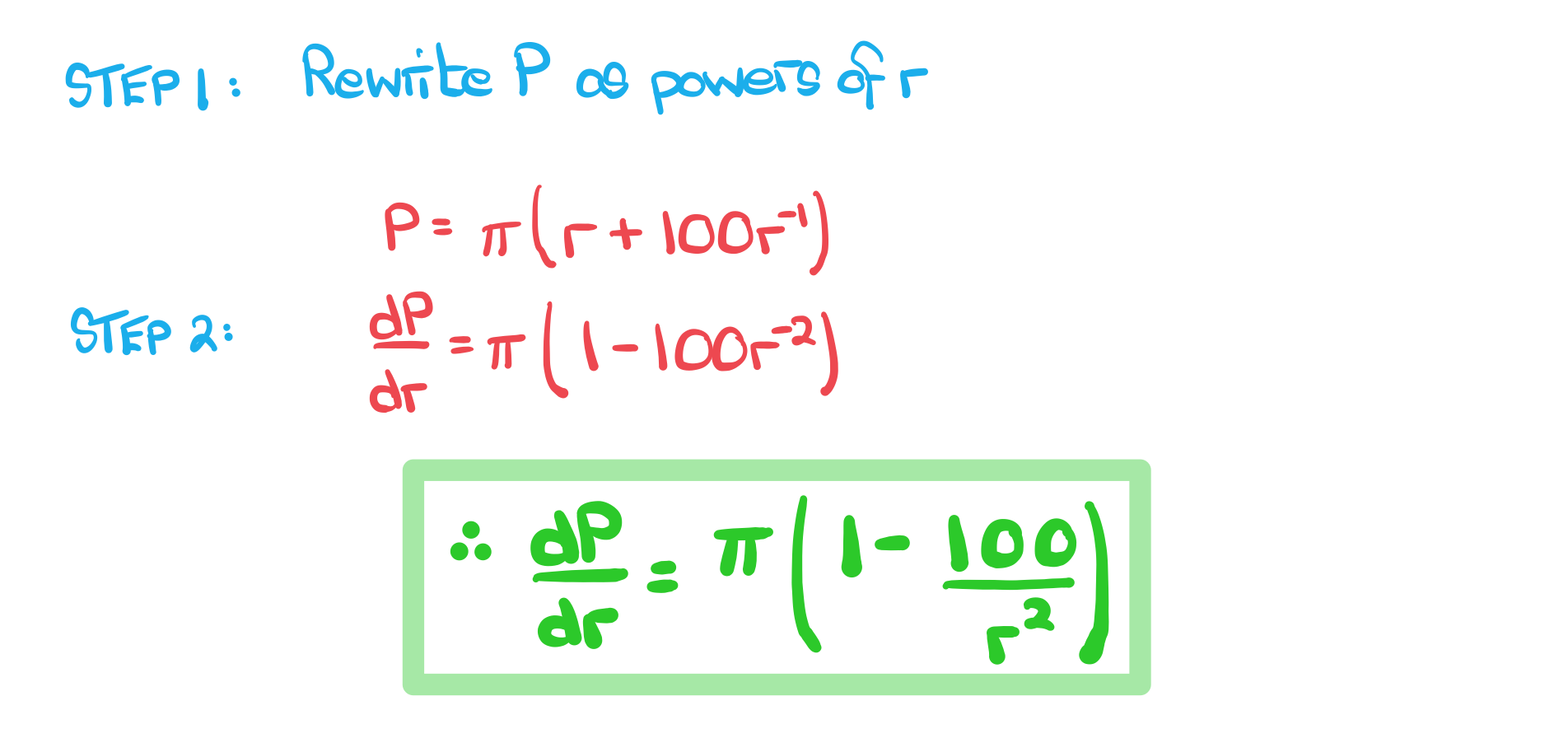
c) Find the value of that minimises the perimeter.
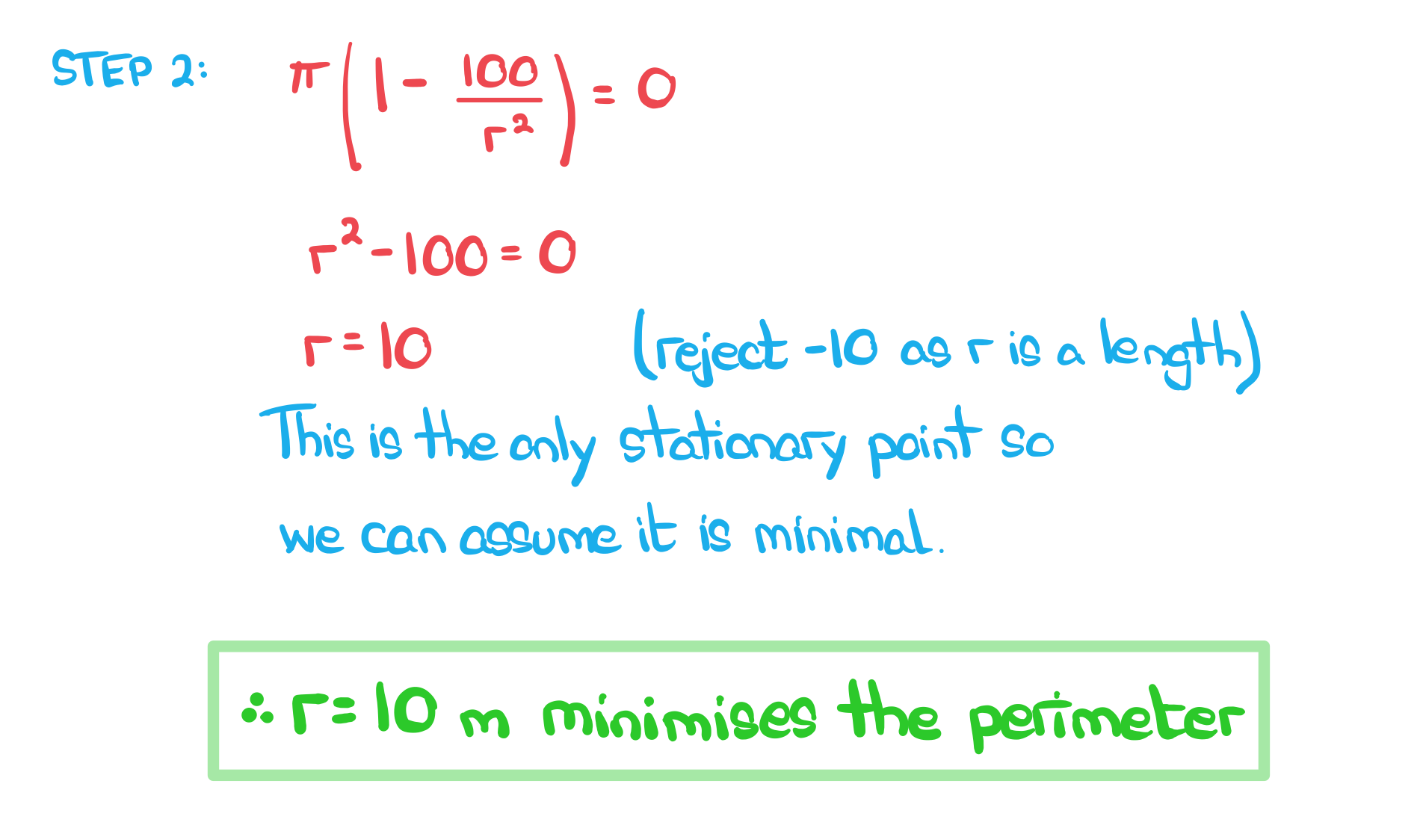
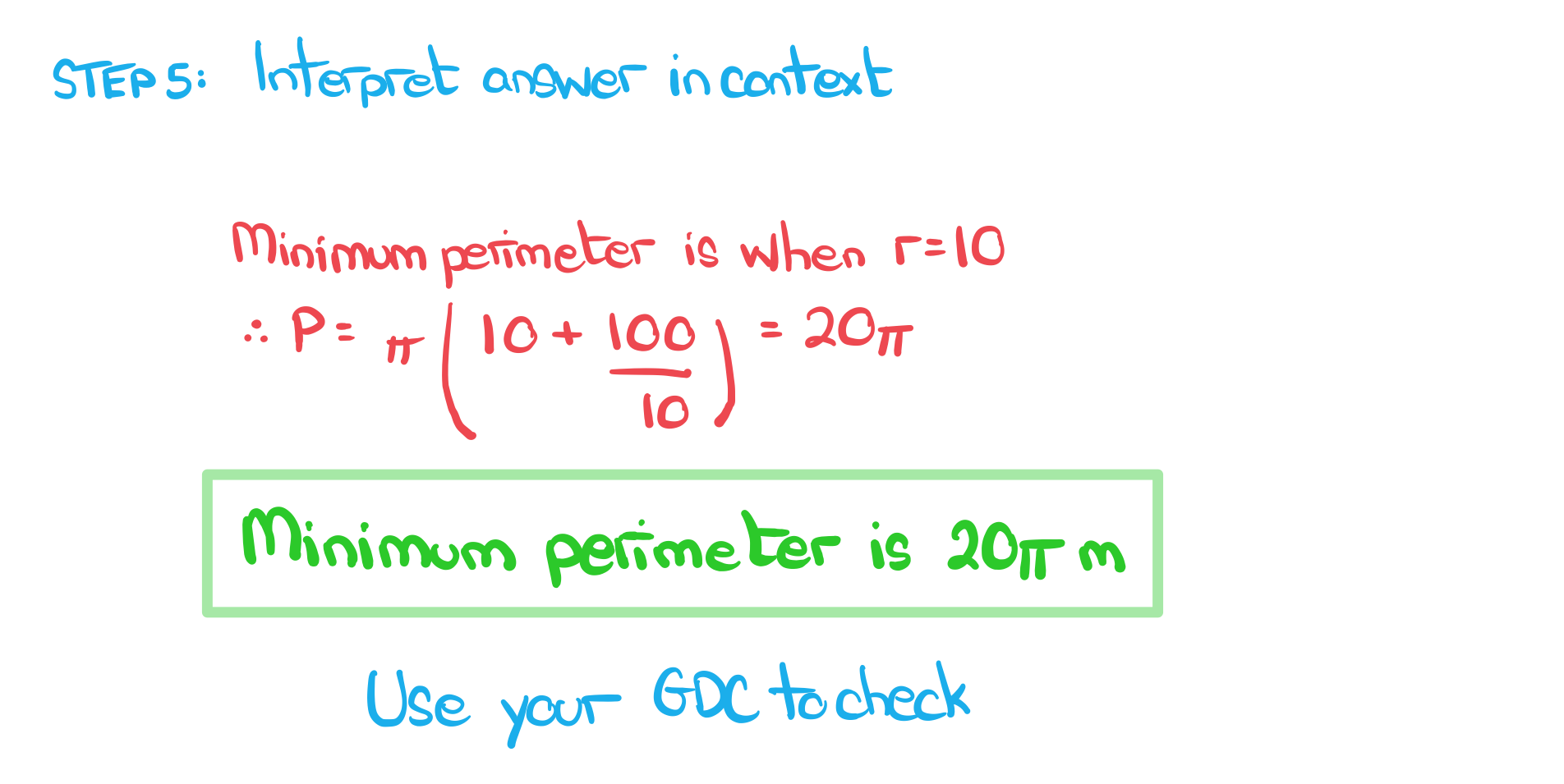
e) Justify that this is the minimum perimeter.
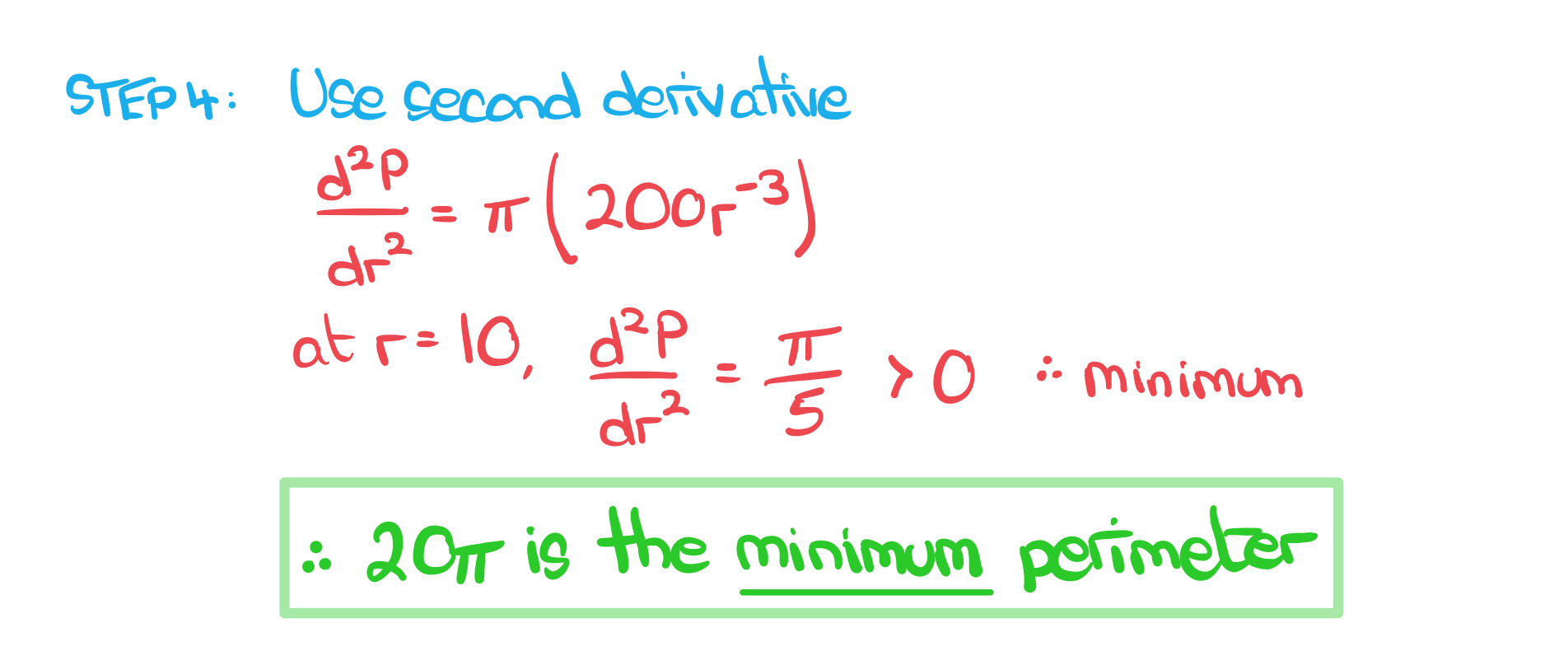
转载自savemyexams

早鸟钜惠!翰林2025暑期班课上线

最新发布
© 2025. All Rights Reserved. 沪ICP备2023009024号-1








